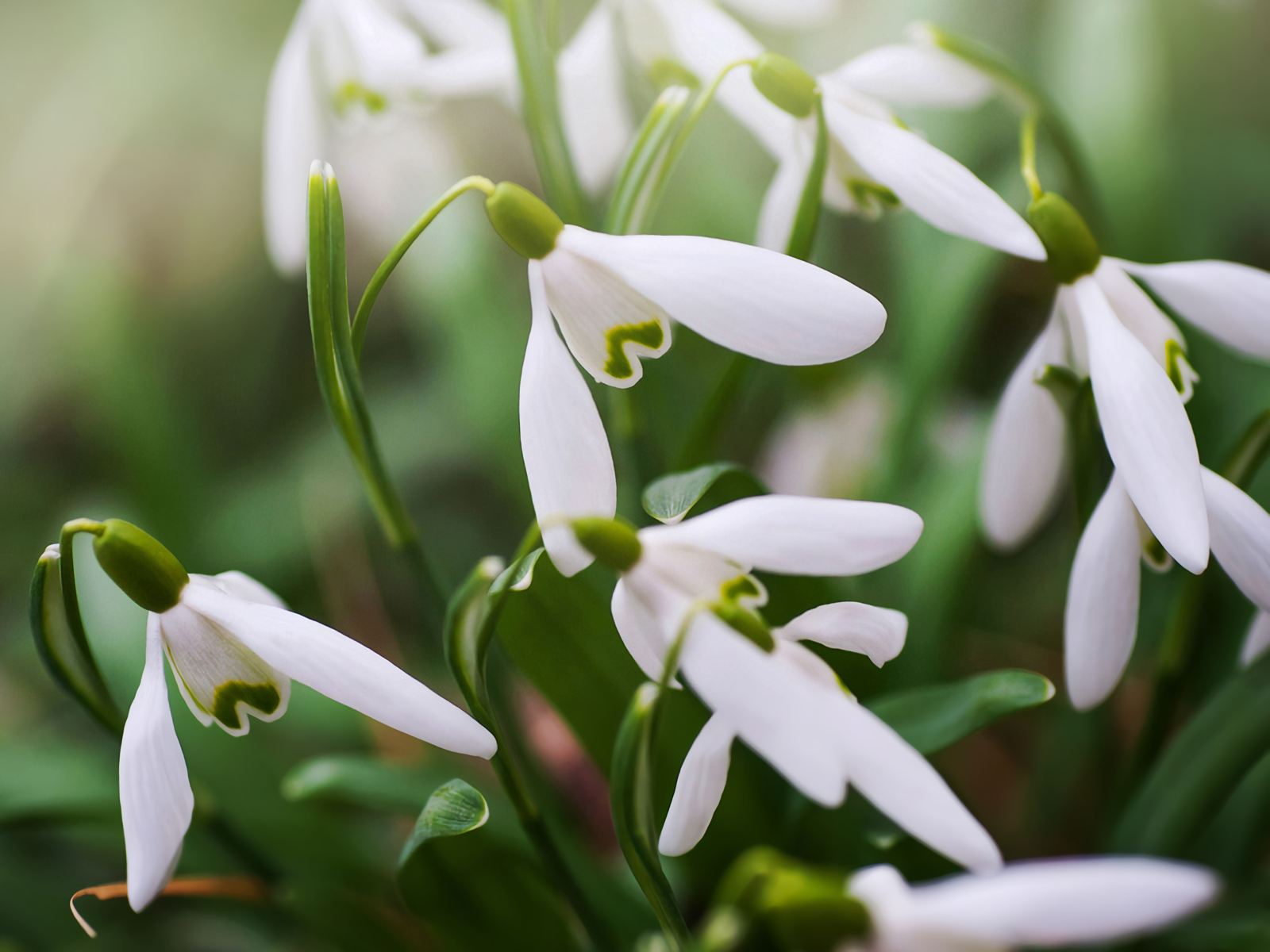What was Carl Linnaeus’ contribution to the field of taxonomy?
Carl Linnaeus is considered to be the father of modern taxonomy. He developed a hierarchical system of classification that is still used today, which is based on similarities in physical characteristics among organisms. He also developed the binomial system of nomenclature, which is still used today to name and classify organisms.
How did Carl Linnaeus’ work influence the scientific community during his time?
Carl Linnaeus’ work had a significant impact on the scientific community during his time. His development of a systematic approach to naming and classifying organisms helped to standardize the way in which scientists discussed and studied the natural world. His ideas were widely accepted and used throughout Europe, and his system of classification remains an important tool in biology today.
What was Carl Linnaeus’ impact on the field of botany?
Carl Linnaeus is considered to be one of the most important figures in the history of botany. His classification system was based on physical characteristics of plants, which helped to simplify the study of botany. He also introduced the use of Latin as the international language for scientific names, which is still used today.
How did Carl Linnaeus’ work on the natural world relate to his religious beliefs?
Carl Linnaeus was deeply religious, and he believed that the study of the natural world was a way to understand God’s creation. He believed that each organism had a purpose and that the study of nature was a way to better understand God’s plan.
What is the legacy of Carl Linnaeus today?
Carl Linnaeus’ legacy can be seen in his enduring contributions to the field of biology. His system of classification and nomenclature is still widely used today, and his ideas have influenced generations of scientists. He is also remembered as a pioneer in the field of ecology, and his work helped to establish the importance of understanding the relationships between organisms and their environment.
Carl Linnaeus was in many ways a symbol for Swedish science in the 18th century. Not only was he one of the pioneers of Sweden’s new scientific era, but he was also very well known internationally, so the country was of interest to scientists. Although Carl Linnaeus gained the title of nobility later in his life, he came from humble roots.
Who Was Carl Linnaeus?
Carl Linnaeus was born on May 23, 1707, in the Smaland countryside in southern Sweden to a family of priests and farmers. Carl soon became interested in flowers and plants thanks to his amateur botanist father, Nils, who was also the pastor of the small village community. After years in high school, he joined Lund University in 1727, but only a year later decided to enroll at Uppsala University. Linnaeus wanted to study medicine, but it was botany that most impressed him, which also played an important role in medicine.
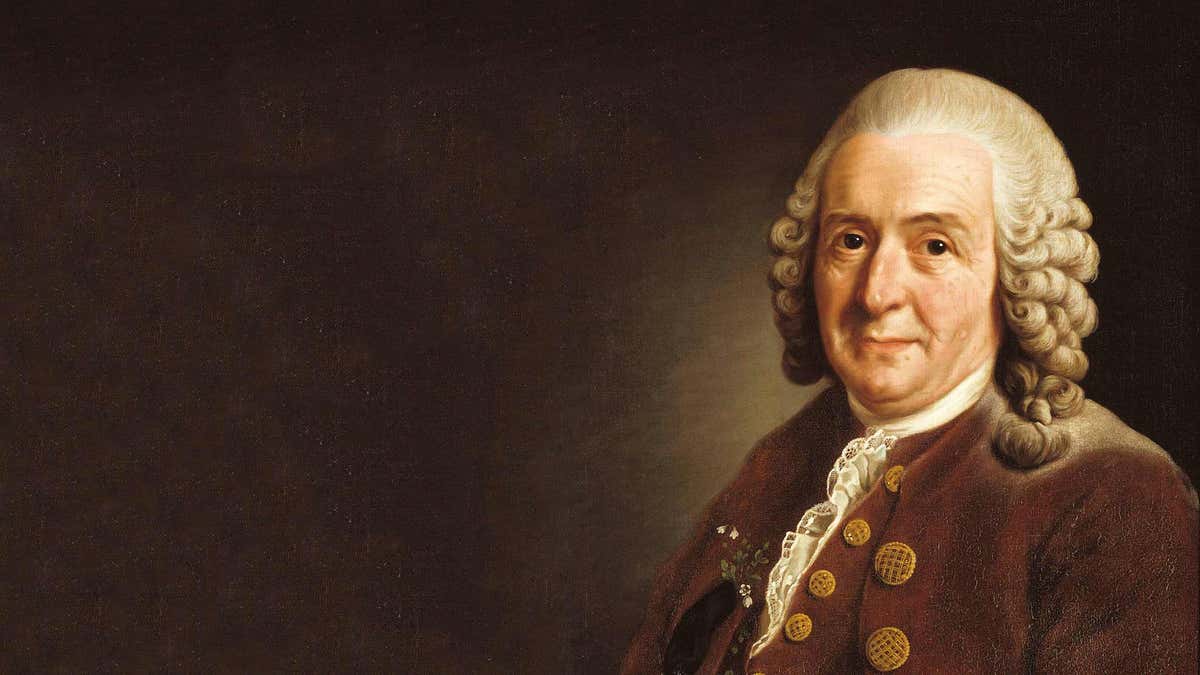
Carl Linnaeus found that this discipline was complex and uneven. His knowledge of new plants was rapidly increasing with his travels abroad. Although he tried to emulate recent systematics such as those of Aristotle, Andreas Cesalpino, Caspar Bauhin, or Joseph Pitton de Tournefort, there were always several problems. Some naturalists grouped the plants according to their color, some according to their size, and some according to their leaves and fruits. Eventually, Linnaeus decided to establish his own system.
He discovered that plants have separate sexes from German Rudolf Jacob Camerarius and French Sebastien Vaillant. The stamen with pollen represented the male reproductive organs, while the pistil with ovaries represented the female reproductive organs. By the end of 1729, Linnaeus had written a short article in Swedish, but the title was in Latin: “Praeludia sponsaliorum plantarum” (On the prelude to the wedding of plants). He would then go even further based on his new observations.
At that time, Uppsala’s botanical professor had grown old. Linnaeus took up the task of teaching the students and going on short tours. In the summer of 1732, he made a trip to Lapland and published his views on the trip later under the name Iter lapponicum. The book was published in English in 1811 and in Swedish in 1889. To become a medical doctor in Sweden, it was necessary to study abroad and get a doctorate from a foreign university. Linnaeus set out on this trip in 1735, arrived at the small university town of Harderwijk in the Netherlands via Hamburg and Amsterdam, and received his doctorate with a thesis on fever.
He then traveled to Leiden to meet both the most distinguished medical expert of his time, Herman Boerhaave, and the respected botanist Johann Friedrich Gronovius. Luckily, Linnaeus got a job at George Clifford’s estate, Hartekamp, located between Leiden and Haarlem. Clifford was the Dutch East India Company’s wealthy director. He spent two years here taking charge of Clifford’s garden, library, and herb collection.
Classification Systems Including Homo Sapiens
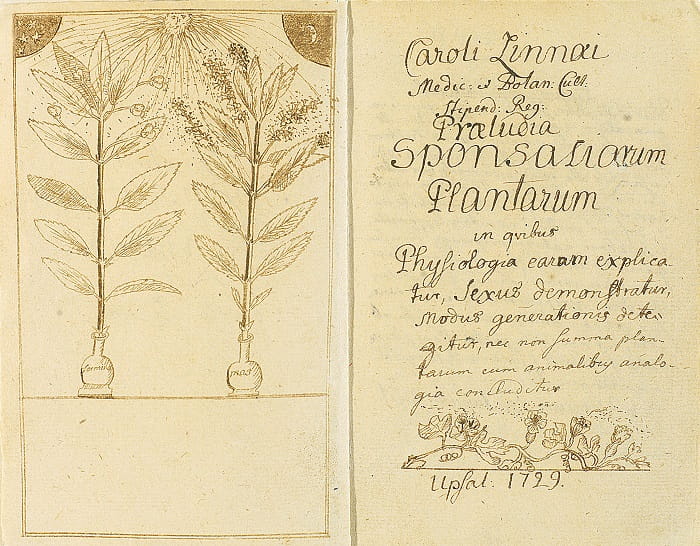
Carl Linnaeus’ research at Hartekamp was intense and enthusiastic. He was working on and publishing many manuscripts he brought from Sweden. Being supported financially and morally by both Gronovius and Clifford, his apparent talent led his patrons and supporters to compete with each other. The most important text published in this period is Systema Naturae, published in late 1735. He divided nature into three kingdoms on tables made of folded sheets of paper: the mineral kingdom (Regnum lapideum), the plant kingdom (Regnum vegetabile), and the animal kingdom (Regnum animale). Linnaeus placed man above the four-legged animals and called him Homo sapiens, the term he developed.
Such a suggestion, of course, was too daring for its time and could cause discomfort. In his argument, Linnaeus explained that man is also a part of creation and belongs to the animal kingdom, not the mineral or plant kingdoms. He was also the first to divide the human species into races or varieties. Thus, he established a field of science called physical anthropology that could never get rid of its roughness. He suggested that there were five varieties of man, consisting of European, American, Asian, African, and the “monsters” or Homo monstrosus, such as the Hotantos. Considering the period, it was not surprising that the European races were considered to be at the top and Africans at the bottom.
But the most famous of the kingdoms laid out in Systema Naturae is the plant kingdom. Carl Linnaeus especially described the sexual systems of plants, and this system was known as the Linnaeus system. In the book, he created a new system for the genitals called stamen and pistil, based on the belief that plants are sexual creatures. By counting the stamens and specifying their arrangement, he divided the plants into 24 groups, that is, classes, and subgroups, that is, by counting the stigmas of the pistils. Classification is divided into classes, then orders, families, and species. There are plants with one to ten stamens in the first ten classes; the following thirteen classes include plants with different stamen arrangements (e.g., two long and one short). The twenty-fourth grade is flowerless plants, class Cryptogamia.
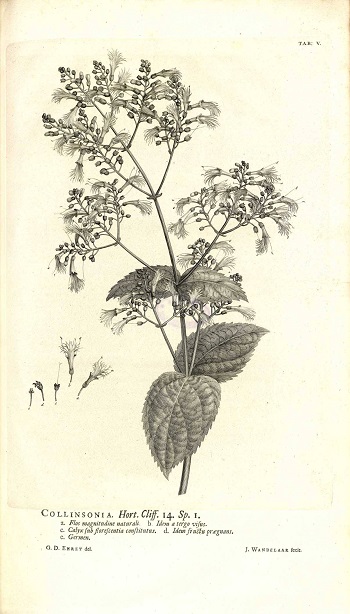
Linnaeus gives lively and poetic accounts of plant sexual life in the Systema Naturae, as he did in his early article on plant marriage. According to that, the first flower in the first class is monogamous, the flower in the eighth class has one female and eight male bridal chambers, and in the fourteenth class, there is one woman and four males, two short and two tall. Some were disturbed by this frankness. Nevertheless, the sexual system was accepted and gained great importance.
Carl Linnaeus had given botanists a common language. Systema Naturae had been reprinted many times during his lifetime. The last self-published edition is the 12th edition from 1766–68; at that time, the original 13 pages were expanded into three languages. Although Linnaeus’s sexual system is not used in advanced science today, it is still used in basic manuals. The Linnaeus system was not intended to represent natural groups but to be used only for diagnosis. During his three years in the Netherlands, his productivity was incredible. Besides Systema Naturae and other small works, he published eight large studies, mostly on the extensions and implementations of sexual systems.
He did an impressive job of describing the flowers in the Clifford garden, named Hortus Cliffortianus. Then came his original works. In his book Fundamenta botanica (Foundations of Botany), he explained the underlying method of specifying the plants into species, teams, and classes in his system.
Critica botanica (Critique of botany) presented the rules for the nomenclature of species. The Genera Plantarum (general plants) defines all the plant families he was concerned with until then, divides them into classes and orders, and describes all botanical systems from Cesalpino to his own. In the summer of 1736, he found the opportunity to travel to England at Clifford’s expense. In London, he met Sir Hans Sloane, who was the chairman of the Royal Society after Newton, and the German botanist Johann Jacob Dillenius at Oxford.
Carl Linnaeus returned to Sweden in June 1738 and never left the country. He settled in Stockholm and worked as a medical doctor. In 1741, he became a professor at Uppsala University and was appointed as the court physician. In 1758, he bought the Hammarby farm outside of Uppsala. In 1762, he was given the title of nobility and the name von Linne.
Naming The Natural World
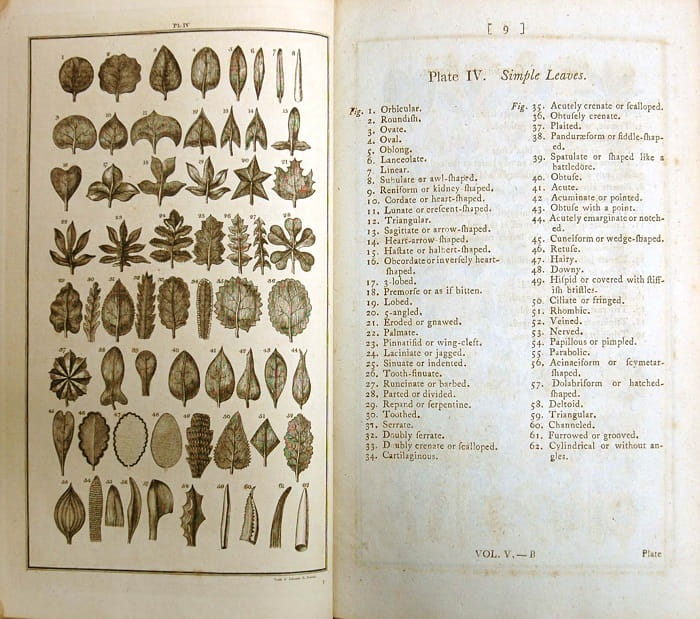
If the sexual system in Systema Naturae was Linnaeus’ first great achievement, the latter should be Species plantarum (species of plants), which is considered the starting point of the modern botanical nomenclature of 1751 that deals with the species of plants. It contains approximately 8000 plant species, which were all known at the time. How they are recorded is just as important. Here Carl Linnaeus suggests using a binary naming system, with a first name and a surname, for all species. Previously, the species were given a family name followed by a long description. Now Linnaeus could clearly identify a plant with just two words. The first, the surname, indicates the genus, and the second, the genre; for example, Sinapis arvensis is wild mustard.
The names were not given by coincidence. Genus names were often attached to the name of a famous botanist. For example, Linnaeus’ colleague Gronovius named an ordinary plant in Sweden called Linnaea borealis after Linnaeus, while borealis meant north. Linnaeus found it appropriate because he himself was “humble and unpretentious” like the flower, but perhaps not all of his colleagues agreed on this.
His third important contribution was the way he described plants. He described the most difficult species precisely and offered terminology for the parts that identify the plants. He had sharp eyes that easily noticed small details, and his definitions were always clear and concise, explaining the essentials in a few words. Carl Linnaeus pursued his passion for classification to its logical conclusion.
Science Based on Faith

Linnaeus’ view of nature was based on his religious beliefs. According to him, the universe had a fixed structure. Species were fixed and unchanging. The number of species had been the same since creation. God created all species in their exact present forms. After this act of creation, everything naturally emerged from the seed or egg. Carl Linnaeus often quoted the Latin phrase “Omne vivum ex ovo,” “all life [is] from life.” These words indicated that he did not accept the idea of the primordial soup or the belief that some flies were derived from animal carcasses. But after a while, Linnaeus had to question the idea of the stability of species.
He saw a new plant that he would later name Peloria and first thought it was a decayed specimen of Linaria vulgaris. He later realized, however, that it was a hybrid, the result of a cross between the two species. Confused, in his 1744 treatise, he described the plant as Peloria and attempted to explain why it did not fit into the classification system. Since he had to admit that hybridity is a phenomenon, he thought that all species in a family came from the same parent form.
Despite his clear academic manner, Linnaeus was never one of those armchair thinkers who were disconnected from nature. Nobody could describe the beauty of nature like him, and no one could celebrate the closeness of the Creator like him. God was everywhere in creation, and the scientist was obliged to show this. Carl Linnaeus thus followed Aristotle’s idea of the “chain of being,” catena naturae: everything in creation was arranged as angels at the top, humans, animals, plants, and inanimate matter at the bottom. There were no gaps in creation; therefore, Carl Linnaeus said, “Nature does not make jumps.”
Economy of Nature
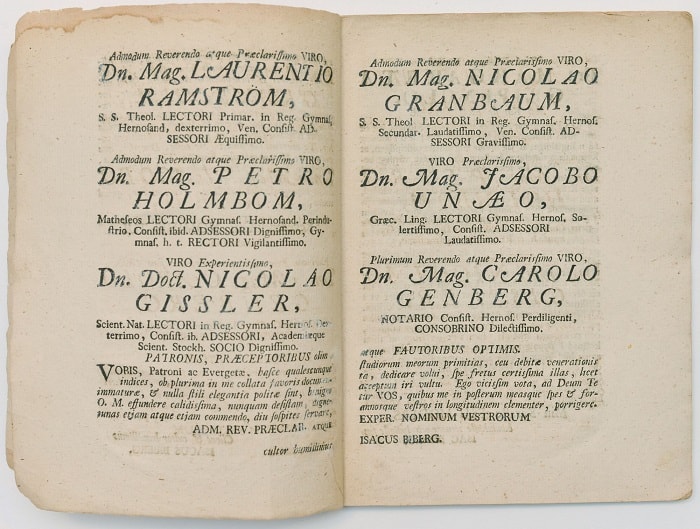
The Divine Order could be described in another way, by some kind of state of equilibrium. Carl Linnaeus discussed this in his Oeconomia naturae (The Economy of Nature), published in 1749. All living things depend on each other for survival. The defeat and death of an individual always benefit another. What happens is a “war of all against all.” Carl Linnaeus, therefore, believed that in societies, wars broke out in the most populous areas, thereby limiting population growth.
Nature exhibits order and balance in a variety of ways. Linnaeus never stopped repeating the geographical distribution of plants and animals. Different lifestyles require different environments. God had established different climates and environments on earth in which all creatures could be satisfied. Due to his thoughts on distinct plants and their demanding special conditions for their survival, Carl Linnaeus can therefore be regarded as the forerunner of what we now call “ecological thinking.”
Another interesting aspect of Linnaeus was his interest in common folk beliefs and mysticism. Carl Linnaeus lived in the middle of the 18th century, when rationally enlightened belief was spreading throughout Europe, but he could be quite old-fashioned in some ways. He believed, for example, that swallows spend the winter at the bottom of the sea. Nevertheless, he never experimented by putting a swallow underwater. He was warm to numerology and the idea that people went through twelve periods of seven years each, such as the child losing his milk teeth at the age of seven and entering puberty at the age of fourteen.
Carl Linnaeus and His “Apostles”
Linnaeus also wrote a study on various creatures from the animal kingdom. These included not only chimpanzees and orangutans but also some animals, such as cavemen and tailed men. Of course, Linnaeus had never seen these fantasy creatures; he had only heard or read about them. However, that did not prevent him from publishing pictures of them. While Linnaeus behaved like a rational scientist by placing man in the animal kingdom, he also believed in superstitious folk beliefs.
Linnaeus had a special relationship with his disciples. He looks at them, speaks affectionately about them, and sends them into the world to discover rare plants. He called them “the apostles.” He had a desire to learn as much as possible about the created world, mostly about all plants and animals. He sent his apostles to every corner of the world, from Iceland in the north to Australia in the south, from Japan in the east to America in the west. They brought what they found home to their master in Uppsala; they wrote letters and reports to him and published their findings in scientific journals and books.
Carl Linnaeus did not even go to Europe in his adult years but continued to study nature in every corner of the world through his apostles. In the last four years of his life, Linnaeus was unable to do any scientific work due to two strokes that left him semi-paralyzed. He died at the age of 71 at his home in Uppsala, quite old for his time.
References
- Braziel, Jana Evans (2007). “Genre, race, erasure: a genealogical critique of “American” autobiography”. In Joseph A. Young and Jana Evans Braziel (ed.). Erasing Public Memory: Race, Aesthetics, and Cultural Amnesia in the Americas. Mercer University Press. pp. 35–70. ISBN 978-0-88146-076-6.
- Broberg, G. (1975). Homo sapiens L. studien: Carl von Linné naturuppfattning och människolära. Uppsala: Almquist and Wiksell.
- Anderson, Margaret J. (1997). Carl Linnaeus: Father of Classification. United States: Enslow Publishers. ISBN 978-0-89490-786-9.
- Broberg, Gunnar (2008). “The Dragonslayer”. Tijdschrift voor Skandinavistiek. 29 (1–2): 29–43. Archived from the original on 12 January 2013.
- Broberg, Gunnar (2006). Carl Linnaeus. Stockholm: Swedish Institute. ISBN 978-91-520-0912-3.
- Davis, P.H.; Heywood, V H. (1973). Principles of Angiosperm Taxonomy. Huntington, New York: Robert E. Krieger Publishing Company.


